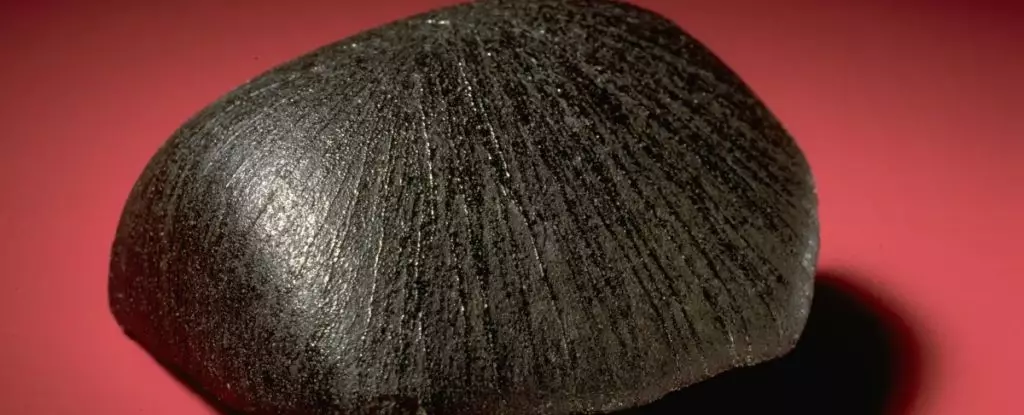The exploration of Mars has long captivated scientists and enthusiasts alike, as the red planet provides tantalizing clues about its watery past. Evidence suggests that ancient Mars was once a world filled with lakes and oceans, an environment radically different from the arid landscape seen today. While scientists have established that water was once present on Mars, unraveling the timeline and mechanisms behind its disappearance remains a formidable challenge. A recent breakthrough involving the analysis of a meteorite has yielded vital information about Martian water, highlighting the complexity and dynamic history of the planet.
A key piece of the puzzle emerged from the Lafayette Meteorite, which was ejected from Mars about 11 million years ago and eventually landed on Earth. Researchers have performed sophisticated analyses of this meteorite, revealing that minerals within it were formed in the presence of liquid water just 742 million years ago. Geochemist Marissa Tremblay, from Purdue University, emphasizes the significance of this finding, noting that such mineral dating provides an opportunity to pinpoint when liquid water might have existed on Mars’ surface during its geological past.
The findings from the Lafayette Meteorite indicate that while liquid water was present, it was likely not abundant. Instead, the researchers propose that the water was likely sourced from melting permafrost—subsurface ice layers—triggered by volcanic activity. Current assessments suggest that such magmatic processes are not relics of Mars’ past; they continue to occur intermittently, contributing to the planet’s surface characteristics.
A pivotal material studied in the meteorite is a specific type of rock known as iddingsite. This rock forms from volcanic basalt under conditions where liquid water is present. Iddingsite found within the Lafayette Meteorite fortuitously contains tiny gas inclusions, specifically argon, which play a crucial role in determining the timeline of water presence on Mars.
Through advanced radiometric dating techniques, scientists establish a timeline for when these minerals formed. This process utilizes isotopes of argon, particularly focusing on the decay of potassium to argon-40. The innovative aspect of this method lies in its ability to act as a proxy for potassium levels in the original rock, allowing researchers to ascertain the age of the rock since its interaction with water.
Dating geological samples poses inherent challenges, especially when considering the tumultuous journey these rocks endure before reaching Earth. The Lafayette Meteorite, for instance, underwent significant changes while being ejected from Mars, traveling through space, and eventually entering Earth’s atmosphere. Tremblay’s research team meticulously considered these factors, modeling the exposure to heat and pressure that the meteorite experienced during its journey to ensure that the ages determined were accurate reflections of the time when water last interacted with the minerals.
Despite the challenges, their findings revealed that the conditions surrounding the Lafayette Meteorite did not significantly distort the apparent age of aqueous alteration. Thus, scientists were able to assert with confidence that 742 million years ago, liquid water was still influencing Mars’ surface geology.
The implications of these findings extend beyond merely reconstructing Mars’ history. Understanding the dynamics of liquid water on Mars contributes to broader questions regarding the origins of water in our Solar System, including theories surrounding Earth’s own water sources. Tremblay and her team assert that the techniques developed to date alteration minerals in meteoritic samples hold potential for application to other planetary bodies, allowing for greater insights into their histories of liquid water.
Moreover, recent observations from the Mars InSight lander suggest that Mars remains geologically active, reinforcing the hypothesis that past conditions may not be as remote as previously thought. As we delve into the fluid dynamics of Mars’ past, we open up new avenues for understanding not just our neighboring planet but also the fundamental questions about the evolution of life-hosting environments across the cosmos.
The study of meteorites like Lafayette sheds light on the complex history of water on Mars, challenging existing narratives and opening up exciting possibilities for future exploration. Our quest to uncover the mysteries of Mars is far from complete—each finding brings us one step closer to understanding not just the planet itself but also the origins of water and life throughout the universe.


Leave a Reply